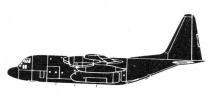Incident Overview

Description
The Cessna 510 Citation Mustang jet impacted wooded terrain near Sieberatsreute in Germany, killing all three occupants. The flight departed Egelsbach, Germany at 17:43 hours local time with two flight crew members and one passenger on board, bound for Friedrichshafen Airport. At 17:59, northwest of Stuttgart, Langen Center instructed the flight to descend from FL210 to FL170, followed by a further descent instruction to FL150. At 18:03 the crew was instructed to change frequency to Swiss Radar. The controller of Swiss Radar instructed the crew to continue to descend to FL110. At 18:05 the crew contacted Zurich Arrival and were told to expect a runway 24 ILS approach to Friedrichshafen. Further descent instructions were given to FL90, 6000 feet, and 5000 feet. At 18:12 the flight was told to turn right to 150 degrees descend to 4000 feet. At 18:13 Zurich Arrival radioed: “[…] right heading two one five, cleared for the ILS approach two four, report established.” This was confirmed by the crew and read back correctly. Subsequently, the radar controller observed that the aircraft crossed the localizer slightly at 4000 feet at a speed of approximately 240 KIAS, and began a rapid descent. The crew did not respond to repeated calls. At 18:14 the plane touched obstacles in a forest area directly west of Waldburg. It then flew at high speed, at a shallow angle, into another piece of forest about 1000 m away. The three occupants were fatally injured and the plane destroyed. A review of previous approaches to Friedrichshafen by OE-FWD showed that the localizer was intercepted at airspeeds between 220 and 240 knots. Every time the localizer was crossed after turning onto the final approach course. The investigation is continuing. Conclusions: The aircraft accident was caused by a sudden loss of control of the aircraft in clouds while turning in for the approach to Friedrichshafen at night. Probably the frontal weather with light to moderate turbulence, snowfall and icing contributed to this. The absence of information about the events on board the aircraft meant that it was not possible to determine the causes of the loss of control.
Source of Information
http://www.schwaebische.de/region_artikel,-Offenbar-drei-Tote-bei-Absturz-von-Business-Jet-_arid,10787767_toid,540.html, http://www.austrianaviation.net/detail/absturz-skytaxi-chef-adi-anderst-ist-tot/http://www.schwaebische.de/region_artikel,-Offenbar-drei-Tote-bei-Absturz-von-Business-Jet-_arid,10787767_toid,540.html, http://www.austrianaviation.net/detail/absturz-skytaxi-chef-adi-anderst-ist-tot/Primary Cause
Sudden loss of control due to a combination of factors, including a potential frontal weather condition with light to moderate turbulence, snowfall, and icing, combined with the aircraft’s navigation procedures and the aircraft’s trajectory.Sudden loss of control due to a combination of factors, including a potential frontal weather condition with light to moderate turbulence, snowfall, and icing, combined with the aircraft’s navigation procedures and the aircraft’s trajectory.Share on:





